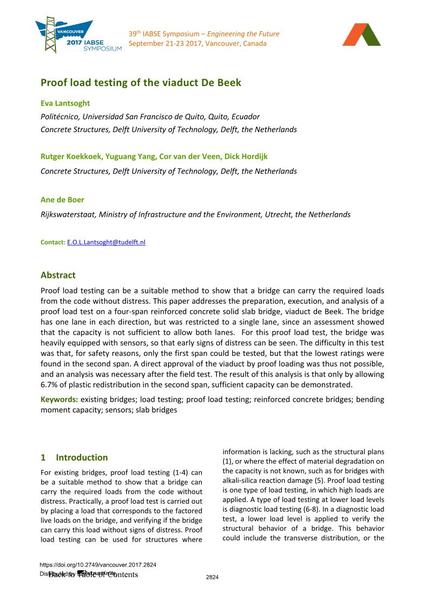Proof load testing of the viaduct De Beek

|
|
|||||||||||
Détails bibliographiques
| Auteur(s): |
Eva Lantsoght
(Politécnico, Universidad San Francisco de Quito, Quito, Ecuador)
Rutger Koekkoek Yuguang Yang Cor van der Veen Ane de Boer Dick Hordijk |
||||
|---|---|---|---|---|---|
| Médium: | papier de conférence | ||||
| Langue(s): | anglais | ||||
| Conférence: | IABSE Symposium: Engineering the Future, Vancouver, Canada, 21-23 September 2017 | ||||
| Publié dans: | IABSE Symposium Vancouver 2017 | ||||
|
|||||
| Page(s): | 2824-2831 | ||||
| Nombre total de pages (du PDF): | 8 | ||||
| Année: | 2017 | ||||
| DOI: | 10.2749/vancouver.2017.2824 | ||||
| Abstrait: |
Proof load testing can be a suitable method to show that a bridge can carry the required loads from the code without distress. This paper addresses the preparation, execution, and analysis of a proof load test on a four-span reinforced concrete solid slab bridge, viaduct de Beek. The bridge has one lane in each direction, but was restricted to a single lane, since an assessment showed that the capacity is not sufficient to allow both lanes. For this proof load test, the bridge was heavily equipped with sensors, so that early signs of distress can be seen. The difficulty in this test was that, for safety reasons, only the first span could be tested, but that the lowest ratings were found in the second span. A direct approval of the viaduct by proof loading was thus not possible, and an analysis was necessary after the field test. The result of this analysis is that only by allowing 6.7% of plastic redistribution in the second span, sufficient capacity can be demonstrated. |
||||
